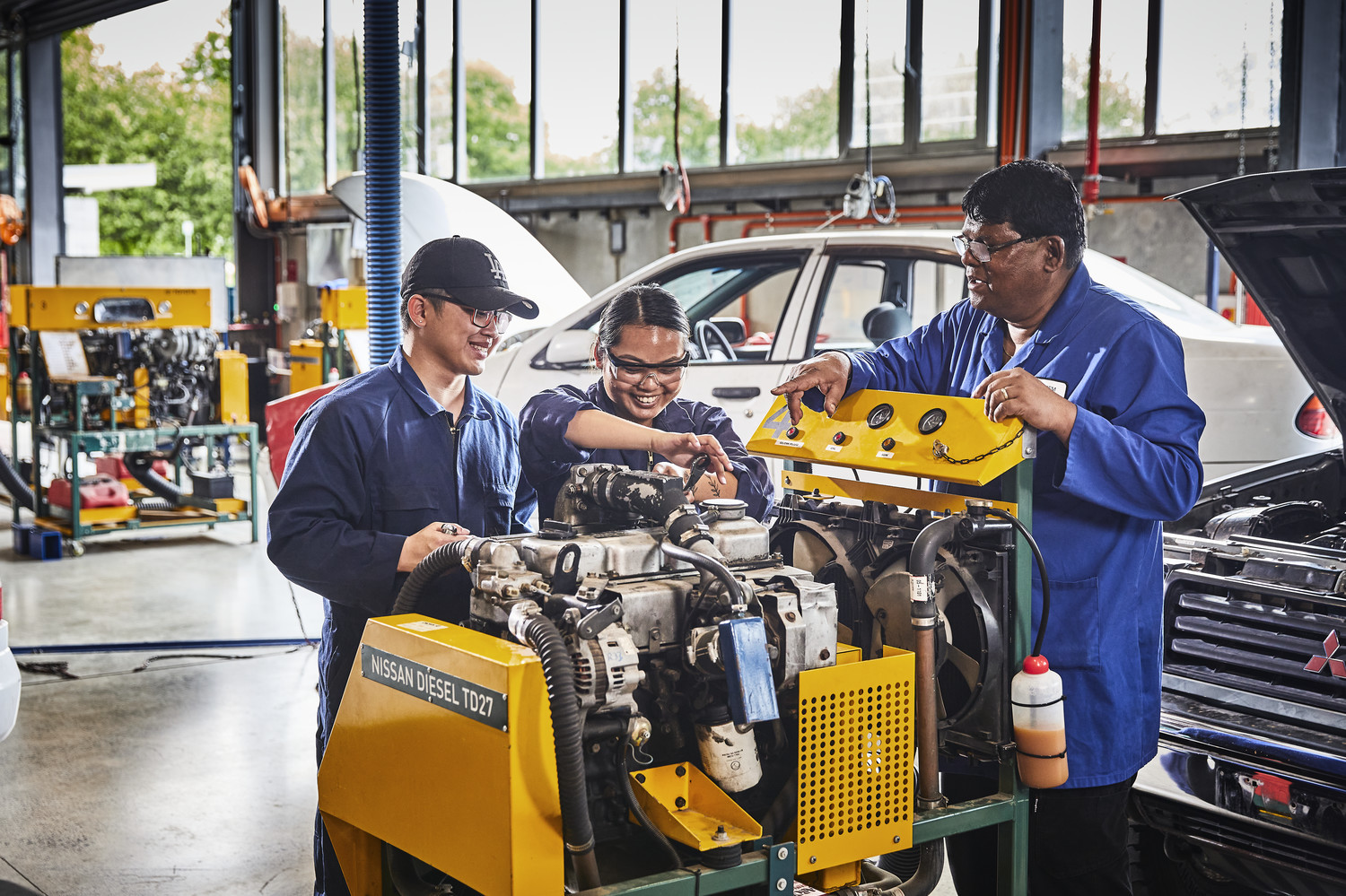Programme overview
If you’re working in the industry or are ready to enter into a work arrangement with an employer, you can further your understanding of light automotive engineering with the New Zealand Certificate in Light Automotive Engineering. At completion of this programme you’ll be able to safely and effectively diagnose and repair mechanical and electronic faults on various vehicles.
As a graduate of this qualification, you will be able to:
- Monitor the workplace and respond to issues as required to maintain a safe and effective workplace
- Apply the appropriate precautionary measures when servicing and repairing high-risk light automotive systems
- Diagnose and repair common faults in light vehicle engines and driveline systems
- Diagnose and repair common faults in light vehicle electrical and electronic systems
- Diagnose and repair common faults in light vehicle steering, suspension, and braking systems
Highlights
- Learn and work in Mataaho, our purpose-built trade facility. This includes multiple workshop spaces and the Giltrap (Volkswagen) sponsored lab with the latest emulation and simulation technologies.
- Improved job prospects: This programme is nationally developed and recognised
- We assist you with employment relationships: This means we work with your employer to recognise the work you do on-site that contributes to your qualification.
- Support and mentoring for students and employers throughout your study
Qualification Pathway
Once you’ve completed this programme and your apprenticeship, you’ll receive the Level 4 qualification: New Zealand Certificate in Light Automotive Engineering. From here, you will be able to work as a qualified Light Automotive Engineer and move on to many other automotive career options.
Graduates may also apply to be assessed for a Warrant of Fitness license via the Vehicle Inspectors Preparatory Course.
How do I gain my qualification?
Admission requirements
For this programme, you will need the following:
1. Completed the New Zealand Certificate in Automotive Engineering (Level 3); or
2. Demonstrate the equivalent skills and you must be an apprentice electrical mechanic or working in an approved automotive premises. Find out more about automotive work placement learning here
3. If English is not your first language, you need one or more of the following:
- Have achieved NCEA Level 3 and New Zealand University Entrance
- Be able to provide evidence you satisfy our criteria for existing English proficiency
- Have achieved at least one English proficiency outcome in the last two years
Don't have NCEA? We also accept:
- Be 20 years or older before the start of the programme
- Provide sufficient evidence of aptitude, appropriate work or other life experience as approved by the Academic Leader
- Entry by Discretionary Admission
For more information download the programme regulations:
Courses and timetables
For more details on the courses including timetables, please click on the course names below.
| Courses | Credits | Aim |
|---|---|---|
| Effective Workplace Maintenance & Safety (ENVS4501) | 15.0 credits (0.125 EFTS) | To enable students to apply knowledge to monitor the automotive workplace to maintain a safe and effective workplace, and respond to issues as required. |
| High Risk Automotive Systems Safety (ENVS4502) | 10.0 credits (0.083 EFTS) | To enable students to apply their understanding of relevant precautionary measures when servicing and repairing high risk light automotive systems. |
| Engine Systems (ENVS4503) | 15.0 credits (0.125 EFTS) | To enable students to apply knowledge and skills to diagnose and repair common engine system faults. |
| Fuel and Emission Systems (ENVS4504) | 10.0 credits (0.083 EFTS) | To enable students for students to acquire the skill set necessary to diagnose and repair common fuel and emission system faults. |
| Driveline Systems (ENVS4505) | 15.0 credits (0.125 EFTS) | To enable students for students to apply their knowledge and skills to diagnose and repair common driveline faults. |
| Transmission Systems (ENVS4506) | 15.0 credits (0.125 EFTS) | To enable students to apply their knowledge and skills to diagnose and repair faults common to transmission systems. |
| Climate Control (ENVS4507) | 15.0 credits (0.125 EFTS) | To enable students to apply their knowledge and skills to diagnose and repair faults common to climate control systems. |
| Vehicle Safety Systems (ENVS4508) | 15.0 credits (0.125 EFTS) | To enable students to apply their knowledge and skills to diagnose and repair common faults found in vehicle safety systems. |
| Body Control Systems (ENVS4509) | 15.0 credits (0.125 EFTS) | To enable students to apply their knowledge and skills to diagnose and repair faults common to body control systems. |
| Wiring Systems (ENVS4510) | 15.0 credits (0.125 EFTS) | To enable students to to apply their knowledge and skills to diagnose and repair common faults found in wiring systems including soldering, and in starting and charging systems. |
| Braking Systems (ENVS4511) | 15.0 credits (0.125 EFTS) | To enable students to apply their knowledge and skills to diagnose and repair common light vehicle braking system faults. |
| Suspension Systems (ENVS4512) | 15.0 credits (0.125 EFTS) | To enable students to acquire the skill set necessary to diagnose and repair common non-independent and independent suspension system faults. |
| Steering Systems (ENVS4513) | 15.0 credits (0.125 EFTS) | To enable students to apply their knowledge and skills to complete wheel alignment work and diagnose and repair faults common to steering systems. |
| Wheels and Tyres (ENVS4514) | 15.0 credits (0.125 EFTS) | To enable students to apply their knowledge and skills to diagnose and repair common wheel and tyre faults, identify tyre rejection reasons and carry out tyre replacement to industry compliant standard. |
mechanic




